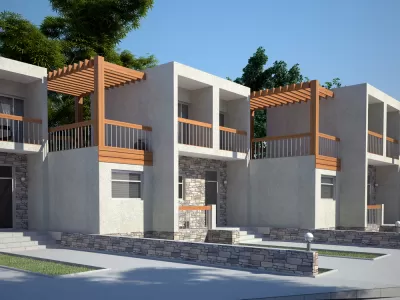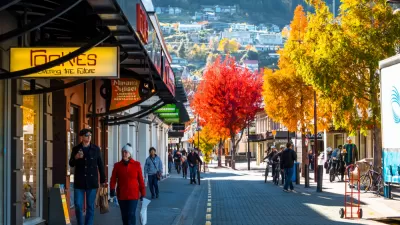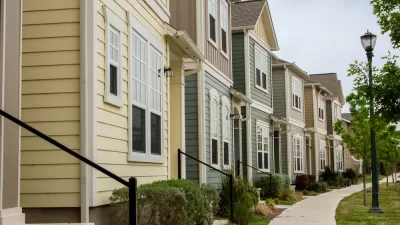To fix the housing crisis, cities should focus on "missing middle housing" and multi-family development.

Jake Bullinger, in a piece for In These Times, assesses some of the upzoning programs being implemented by many cities in the American West as they struggle to get a handle on the growing housing affordability crisis.
The "regulatory and economic cocktail" that leads developers to "go big and expensive" and prevents multi-unit development near major job centers, writes Bullinger, has led to huge imbalances in housing availability and cost. "In some areas of California, for instance, new jobs have outnumbered new homes 12 to 1." Restrictive single-family zoning policies, the kind that cities across the country are currently reevaluating, have stifled new housing construction and deepened the crisis by preventing mid- and high-density development in some of the most resource-rich parts of cities.
"In an efficient market, developers would build apartments where land is expensive and rent is high — the developer gets more revenue-generating units per parcel, and renters get the option of smaller, less-expensive housing. But that hasn’t been the case in California: nine of the state’s 12 most expensive cities permitted zero multifamily units between 2013 and 2017." With the need for more housing options growing every day, says Bullinger, "a corner-lot fourplex on every block could go a long way."
FULL STORY: Towns Across the West Face a Housing Crisis. More Sprawl Is Not the Answer.

Maui's Vacation Rental Debate Turns Ugly
Verbal attacks, misinformation campaigns and fistfights plague a high-stakes debate to convert thousands of vacation rentals into long-term housing.

Planetizen Federal Action Tracker
A weekly monitor of how Trump’s orders and actions are impacting planners and planning in America.

Chicago’s Ghost Rails
Just beneath the surface of the modern city lie the remnants of its expansive early 20th-century streetcar system.

Bend, Oregon Zoning Reforms Prioritize Small-Scale Housing
The city altered its zoning code to allow multi-family housing and eliminated parking mandates citywide.

Amtrak Cutting Jobs, Funding to High-Speed Rail
The agency plans to cut 10 percent of its workforce and has confirmed it will not fund new high-speed rail projects.

LA Denies Basic Services to Unhoused Residents
The city has repeatedly failed to respond to requests for trash pickup at encampment sites, and eliminated a program that provided mobile showers and toilets.
Urban Design for Planners 1: Software Tools
This six-course series explores essential urban design concepts using open source software and equips planners with the tools they need to participate fully in the urban design process.
Planning for Universal Design
Learn the tools for implementing Universal Design in planning regulations.
planning NEXT
Appalachian Highlands Housing Partners
Mpact (founded as Rail~Volution)
City of Camden Redevelopment Agency
City of Astoria
City of Portland
City of Laramie





























